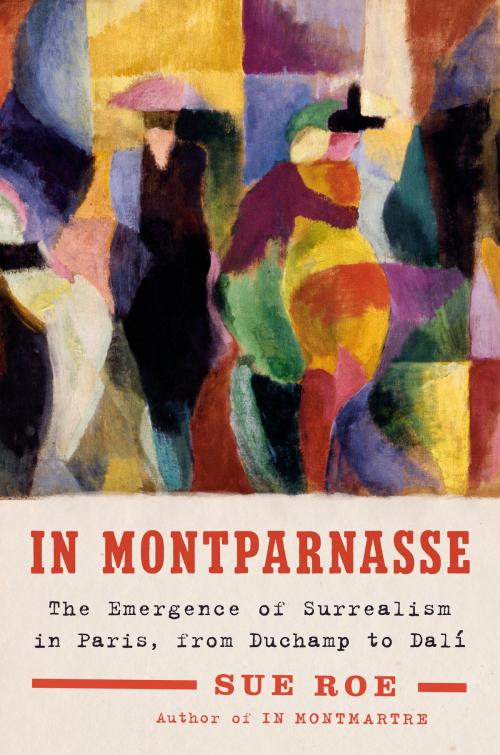In Montparnasse
The Emergence of Surrealism in Paris, from Duchamp to Dalí
Biography & Memoir, Artists, Architects & Photographers, Nonfiction, Art & Architecture, Art History| Author: | Sue Roe | ISBN: | 9781101981184 |
| Publisher: | Penguin Publishing Group | Publication: | August 20, 2019 |
| Imprint: | Penguin Press | Language: | English |
| Author: | Sue Roe |
| ISBN: | 9781101981184 |
| Publisher: | Penguin Publishing Group |
| Publication: | August 20, 2019 |
| Imprint: | Penguin Press |
| Language: | English |
As she did for the Modernists IN MONTMARTRE, noted art historian and biographer Sue Roe now tells the story of the Surrealists in Montparnasse.
In Montparnasse begins on the eve of the First World War and ends with the 1936 unveiling of Dalí’s Lobster Telephone. As those extraordinary years unfolded, the Surrealists found ever more innovative ways of exploring the interior life, and asking new questions about how to define art. In Montparnasse recounts how this artistic revolution came to be amidst the salons and cafés of that vibrant neighborhood.
Sue Roe is both an incisive art critic of these pieces and a beguiling biographer with a fingertip feel for this compelling world. Beginning with Duchamp, Roe then takes us through the rise of the Dada movement, the birth of Surrealist photography with Man Ray, the creation of key works by Ernst, Cocteau, and others, through the arrival of Dalí. On canvas and in their readymades and other works these artists juxtaposed objects never before seen together to make the viewer marvel at the ordinary—and at the workings of the subconscious. We see both how this art came to be and how the artists of Montparnasse lived. Roe puts us with Gertrude Stein in her box seat at the opening of The Rite of Spring; with Duchamp as he installs his famous urinal; at a Cocteau theatrical with Picasso and Coco Chanel; with Breton at a session with Freud; and with Man Ray as he romances Kiki de Montparnasse.
Stein said it best when she noted that the Surrealists still saw in the common ways of the 19th century, but they complicated things with the bold new vision of the 20th. Their words mark an enormously important watershed in the history of art—and they forever changed the way we all see the world.
As she did for the Modernists IN MONTMARTRE, noted art historian and biographer Sue Roe now tells the story of the Surrealists in Montparnasse.
In Montparnasse begins on the eve of the First World War and ends with the 1936 unveiling of Dalí’s Lobster Telephone. As those extraordinary years unfolded, the Surrealists found ever more innovative ways of exploring the interior life, and asking new questions about how to define art. In Montparnasse recounts how this artistic revolution came to be amidst the salons and cafés of that vibrant neighborhood.
Sue Roe is both an incisive art critic of these pieces and a beguiling biographer with a fingertip feel for this compelling world. Beginning with Duchamp, Roe then takes us through the rise of the Dada movement, the birth of Surrealist photography with Man Ray, the creation of key works by Ernst, Cocteau, and others, through the arrival of Dalí. On canvas and in their readymades and other works these artists juxtaposed objects never before seen together to make the viewer marvel at the ordinary—and at the workings of the subconscious. We see both how this art came to be and how the artists of Montparnasse lived. Roe puts us with Gertrude Stein in her box seat at the opening of The Rite of Spring; with Duchamp as he installs his famous urinal; at a Cocteau theatrical with Picasso and Coco Chanel; with Breton at a session with Freud; and with Man Ray as he romances Kiki de Montparnasse.
Stein said it best when she noted that the Surrealists still saw in the common ways of the 19th century, but they complicated things with the bold new vision of the 20th. Their words mark an enormously important watershed in the history of art—and they forever changed the way we all see the world.















